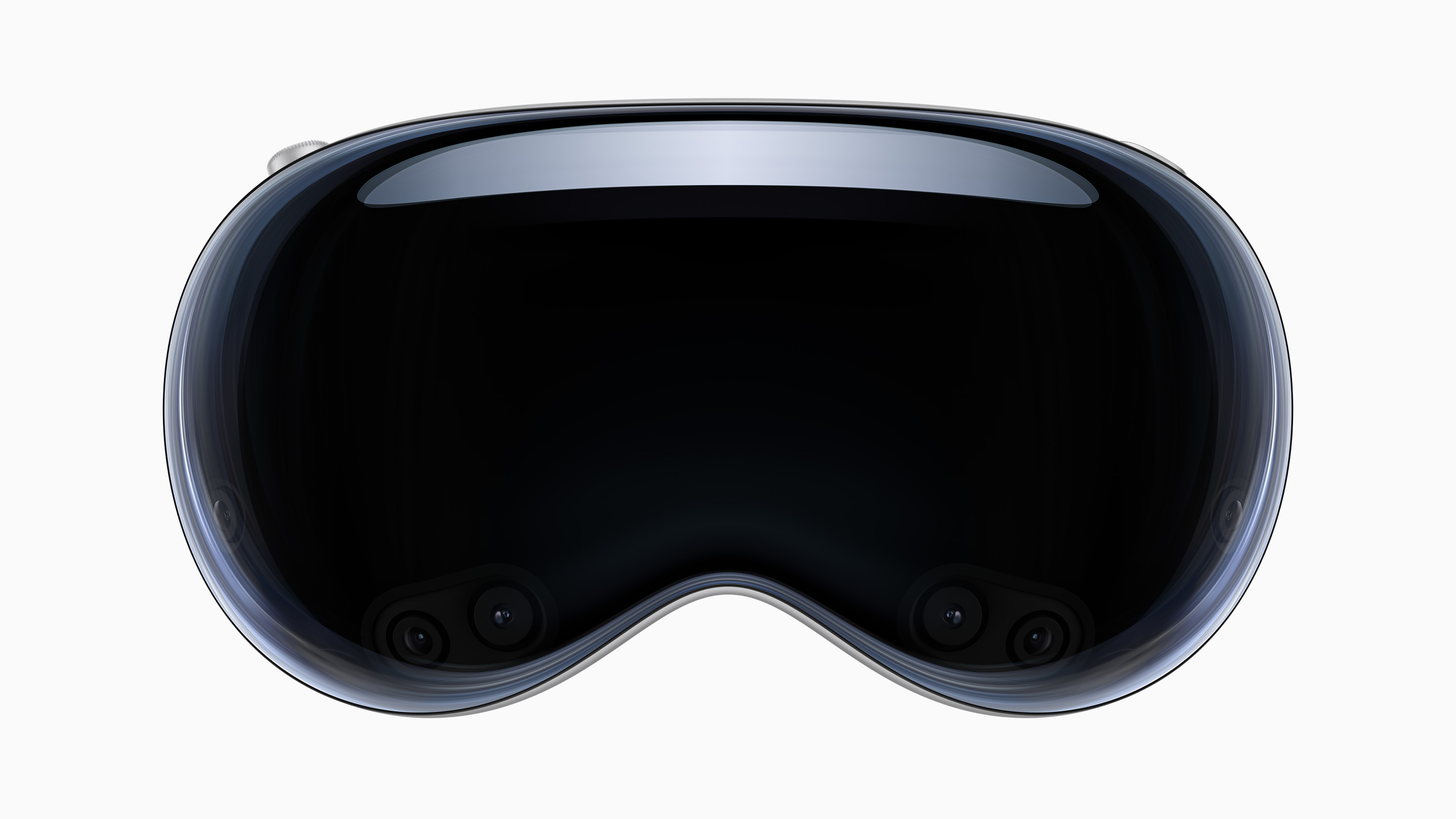06.05.2023
Apple today revealed the "Vision Pro" headset, its first mixed-reality headset device, and visionOS, an all new operating system for the device. Vision Pro is Apple's first mixed-reality device, showing

Vision Pro is Apple's first mixed-reality device, showing passthrough video of a wearer's eyes. The device features an all-new operating system that features a three dimensional interface. Experiences in Vision Pro aren't constrained to the boundaries of a display, users can make apps any scale, and place apps wherever they wish. Environments extend beyond your physical space, and control how immersed you are by turning the digital crown. Apple says that it marks the beginning of "spatial computing."
A Home view floats in the world in front of you to feel "truly present" in your room. Users use a combination of their eyes, hands, and voice to control the device. It uses eye tracking, and finger tapping and flicking to scroll or select.
The headset features passthrough video of a wearer's eyes in a feature that Apple calls "EyeSight," showing different feedback to surrounding people about what you are viewing inside the headset. It uses a lenticular OLED display to show the correct perspective to anyone viewing the wearer.
Vision Pro also allows users to connect to their Mac and expand its display in a virtual space, including alongside apps running on Vision Pro itself.
FaceTime on Vision Pro can display life-sized individuals over video calls. There is an optimized experience for viewing photos and videos. Vision Pro is also "Apple's first 3D camera," showing depth in video with Spatial Audio. The headset features a cinematic video viewing experience to scale the screen beyond the dimensions of your room. Users can create a Digital Persona to use during video calls.
Disney promoted themed experiences for sports, Star Wars, Marvel, National Geographic, and more with Apple's Reality Pro headset. Disney+ will be available for the headset upon the device's launch.
The entire front of the headset is made of polished glass that flows into a lightweight aluminum frame. The top of the headset features a button and a Digital Crown. It has a modular system to achieve an optimal fit. The sides of the headset feature audiopods. Those who wear glasses must use magnetic prescription glass inserts. The headset's battery is separate and links via a magnetic connection to the side of the headset.
The headset features a microOLED Apple silicon backplane and has 23 million pixels across two display panels. 4K video can be rendered at full resolution.
Vision Pro features a new Spatial Audio system provides ambient sound. It can match the sound to an environment using audio ray-tracing.
The headset contains the M2 chip paired with a new "R1" chip, dedicated toward real-time sensor processing.
iPhone and iPad apps can run in visionOS to provide a large number of apps upon the device's launch. It will feature a brand new App Store to discover apps built for visionOS as well as compatible iPhone and iPad apps.
Optic ID uses a wearer's iris to authenticate users and unlock the Vision Pro headset.
Apple's Vision Pro starts at $3,499 and it will be available early next year. It will be available in Apple retail stores in the U.S. only.
More to follow...
Related Roundup: AR/VR Headset
Tag: WWDC
Related Forums: Apple Glasses, AR and VR, Apple, Inc and Tech Industry
This article, "Apple Reveals 'Vision Pro' Headset and visionOS" first appeared on MacRumors.com
Discuss this article in our forums
You may also be interested in this
Apple’s M3 MacBook …
08.11.2024
Apple's M3 MacBook Pro is seeing multiple high value discounts on Best Buy and Amazon today, with up to $1,000 off select models. This includes a new all-time low price
The new Apple Silicon Mac…
06.09.2023
The Apple Silicon Mac Pro is here two and a half years after the shift from Intel began, but it looks like the company only did it to say that
The next iPhone Air has r…
11.10.2025
Apple is no longer planning to launch a second-generation iPhone Air next fall and has “already sharply scaled back production of the first version,” The Information reports. The company launched
Apple Watch Series 9 and …
09.12.2023
The Apple Watch Series 9 and Apple Watch Ultra 2 feature 64GB of storage, double the amount of previous generations. As listed on Apple's specifications page, all versions of the
Apple Announces ‘Gr…
02.21.2024
Apple today announced a new post-quantum cryptographic protocol for iMessage called PQ3. Apple says this "groundbreaking" and "state-of-the-art" protocol provides "extensive defenses against even highly sophisticated quantum attacks." Apple believes
Polestar’s latest softwar…
06.01.2023
Image: Polestar Polestar’s latest software update includes YouTube so Polestar 2 owners can watch streaming video while charging their vehicles and an updated version of Apple CarPlay that includes the
iOS 18.4 Beta Coming Soon…
01.24.2025
iOS 18.3 is expected to be widely released next week, and that means the first iOS 18.4 beta for iPhones should be just around the corner. Apple has previously implied
9to5Mac Daily: June 23, 2…
06.23.2023
Listen to a recap of the top stories of the day from 9to5Mac. 9to5Mac Daily is available on iTunes and Apple’s Podcasts app, Stitcher, TuneIn, Google Play, or through our


